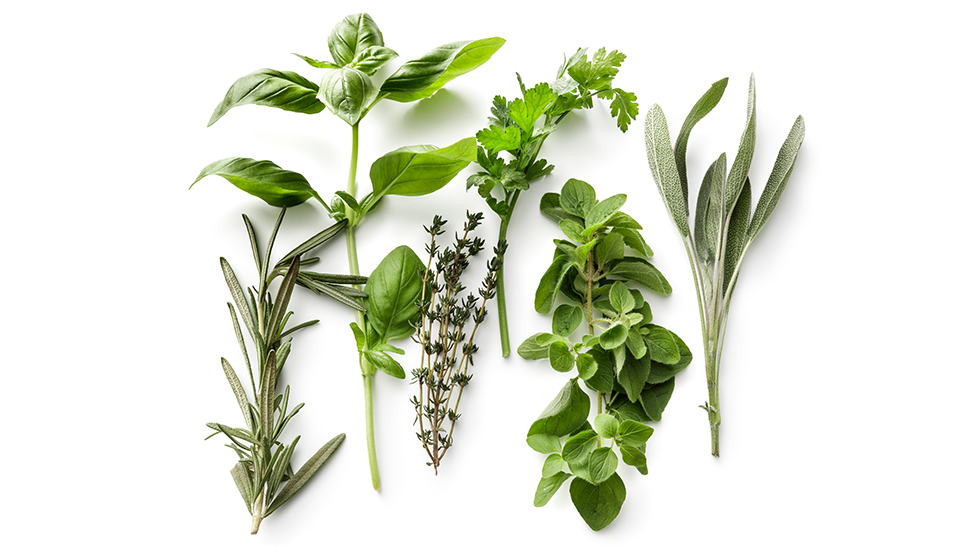
I am looking to cut back on sodium in my diet. Do you have culinary tips for low-sodium cooking?
Salt has many uses in the culinary world — from flavor and preservation to controlling yeast fermentation and building the perfect crust in bread. Before the days of refrigeration, salt was actually used to extend the shelf life of meat and other foods. But fast forward to the modern-day food environment, and salt is often used in excess. Consuming too much salt may increase your risk for high blood pressure and cardiovascular disease, which is why many of us would benefit from cooking and building flavor with less salt. And the more salt you eat, the more your taste buds come to expect a salty flavor.
The majority of sodium in the American diet comes from processed foods and restaurant foods, so if you’re looking to cut back, those are good places to start. However, flavoring food in your home with less salt can not only help bring your total intake down, but also train your taste buds to expect less salt over time. Because salt is a flavor enhancer, cutting back without building up other flavors can leave you with a dish that’s flat. To avoid flavorless food, while cutting back on the salt, use these chef-approved tips to bump up the flavor.
Start with the seasonal ingredients available. Seasonal and local produce packs in a ton of flavor and needs little enhancement (have you ever had a tomato picked straight from the vine?). Out of season foods travel far and often have less flavor so they might need some manipulation to bring out more flavor.
Use those measuring spoons. Instead of adding a pinch of salt here or there, take out your measuring spoons and measure the amount of salt for a recipe. Don’t be afraid to question a recipe – one teaspoon of salt provides the recommended daily limit for sodium (2,300 mg), so a recipe that calls for 1 tsp ideally should serve at least four to six people. If you’re cooking with ingredients that already contain sodium, such as bottled sauces (especially Asian-style sauces), olives, or cheese, you might cut back on the salt even more.
Add the salt later on in cooking. The earlier you add salt to your dish, the more salt you need to satisfy your taste buds. That’s because as it cooks, the flavor lessens. If you’re making a sauce or soup that cooks for a long time, add salt later on in the cooking process to bring out flavor.
Rely on acids. When reducing salt, it is a good strategy to substitute with the use of an acid (aka an ingredient that adds a tart flavor). This can be in the form of fresh citrus juices, vinegars, and even some dairy, like plain yogurt. You don’t need a lot, and for the best flavor, use at the last minute before serving.
Get the most out of your spices. The right mix of spices can drastically change the flavor of your dish. For more flavor, buy the seeds (instead of ground) and use a mortar and pestle, coffee bean grinder, or even hammer to grind your own. Some easy spices to start with include peppercorns, cumin seeds, coriander seeds, dried chili, whole nutmeg, and cinnamon sticks. For even more flavor, toast your spices. To do this, heat a pan on the stove and then add the spices to the dry pan and toss them around by constantly moving the pan (as if you’re trying to shake them up). As soon as you start to smell them, remove from heat so they don’t burn. Once they’re cool, you can grind them. Here’s a quick tutorial on how to toast spices.
Bring on the herbs. Fresh herbs can elevate the eating experience and take your cooking to restaurant-quality level. Roughly chop flat leaf parsley, basil, oregano, chives, tarragon, cilantro, or mint. Use one or create combinations and add at the end of cooking to bring both a fresh flavor and a pop of green to your dish. Resist adding fresh herbs during the cooking process — when they are exposed to heat for too long, they quickly lose their flavor impact. Dried herbs can also add flavor, but you’ll want to use those when you have time to let them work their magic. They are best used in marinades or added to the cooking process early on. You can also blend them with spices for a beautiful mix and pop of flavor.
Make your own blends. Skip the store-bought mixes that often have added salt and make your own mix with different spices. Look to your favorite cuisines to start and then get creative in the kitchen. For example, Latin-inspired spices often include dried chilis, cumin, oregano, and garlic whereas Indian-style seasoning might include peppercorns, cinnamon, cardamom, coriander, and mustard seed. Leave the salt out of your mix and add small amounts as needed separately to a dish. For some inspiration, check out these homemade spice blends.
Trying new techniques and strategies in the kitchen can feel daunting, but with a little knowledge, effort, and strategy you can build on your culinary skills and deliver on flavor. Happy cooking!